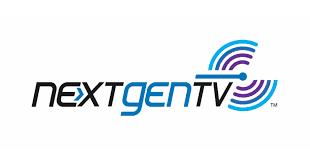The roll out is primarily on lighthouse stations in most markets

ATSC 3.0, known as NextGenTV, is the next generation of digital television broadcasting technology in the United States. It is a significant upgrade over the current ATSC 1.0 standard, which has been in use since the transition from analog to digital television in 2009. ATSC 3.0 offers a number of advantages over the current standard, including improved picture and sound quality, better coverage and reception, and the ability to deliver advanced services such as interactive advertising and targeted content.
One of the key features of ATSC 3.0 is its support for 4K Ultra HD resolution, which offers four times the resolution of 1080p HD. This means that viewers will be able to enjoy much higher quality video and more detailed images. Additionally, ATSC 3.0 supports High Dynamic Range (HDR), which allows for a wider range of colors and brightness levels, resulting in even more vivid and lifelike images.
Another major advantage of ATSC 3.0 is its ability to deliver advanced services such as interactive advertising and targeted content. This allows broadcasters to deliver more engaging and personalized advertising experiences to viewers. For example, interactive ads could allow viewers to interact with the ad and learn more about the product or service being advertised. Targeted content could also allow broadcasters to deliver specific content to specific groups of viewers, such as sports fans or weather enthusiasts.
In terms of the roll out, ATSC 3.0 is being adopted on a voluntary basis, which means that broadcasters have the option to upgrade to the new standard or to continue using the current ATSC 1.0 standard. As of now, ATSC 3.0 has been adopted by a few local stations across the United States, and tested in lighthouses (TV stations broadcasting ATSC 3.0) by about 1,000 stations, and more are expected to follow in the coming years. However, it will take some time before ATSC 3.0 becomes widely adopted, as it requires new infrastructure and equipment, and also need support from device manufacturers and TV stations.
Overall, ATSC 3.0 represents a significant step forward in digital television broadcasting technology and has the potential to greatly enhance the viewing experience for consumers. With its support for 4K Ultra HD and HDR, advanced services such as interactive advertising and targeted content, and improved coverage and reception, it offers a number of advantages over the current ATSC 1.0 standard. However, it will take some time for ATSC 3.0 to be widely adopted and for consumers to start seeing the benefits.

